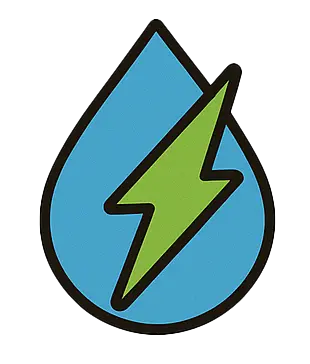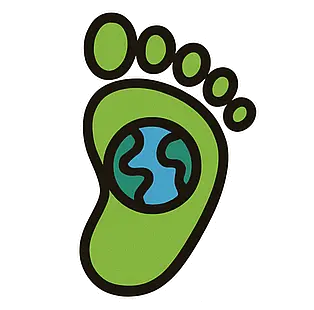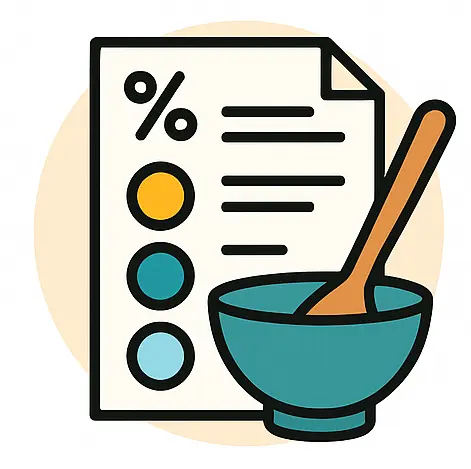thread lightly
Every strand tells a story. knot the end begins with reclaimed wool sweaters, skips the dye, and ends in something beautifully new - with less waste, lighter impact, and a lot more heart.
this yarn isn't new
and that's the point
knot the end yarnstarts with 100% post-consumer wool garments—rescued, cleaned, and mechanically shredded into fibers, then respun into fresh yarn. No added dyes. No new fibers. Just thoughtful, zero-waste sourcing and low-impact processes that reinvent what yarn can be.wool for the planet
When choosing our 100% recycled wool yarn, you’re reclaiming materials, recreating with purpose, and reloving the planet—one stitch at a time.
- Together, we’re crafting more than projects.
- We’re building lasting connections, lasting impact, and lasting well-being
With every purchase of recycled yarn, enjoy these added advantages:

Reduces Waste
Every recycled strand helps cut down on landfill waste.

Conserves Resources
It saves water and energy compared to producing new fibers.

Shrinks Carbon Footprint
Recycling wool has a significantly smaller environmental impact.

Fuels the Circular Economy
By re-using existing resources, we embrace sustainable innovation.
creating colors without dyes
when it comes to recycled wool yarn, creating yarn colours with no dyes simply takes advantage of the colours that discarded garments used to have in their previous life and creating a recipe! Just like a painter mixing paint colours on a palette, it is an art to create recycled wool yarn colours without dyes and chemicals.
raw materials
Obtain colourful fibers from pre- and post-consumer garments that have been sorted by composition and – most importantly – by colour to form bales of rags that are recycled or "shredded" into recycled wool fibres

select fibers
Raw material artisans, called Feltrinisti choose the wool fibres from these bales - just as a painter does from his colour palette - to create a new recycled wool colour

create a receipe
Create a recycled wool 'colour recipe' by mixing numerous and different shades of recycled wool fibres in specific percentages, developing actual ‘recipes’ of no-dye colours.

benefits of wool
breathable wool fibers allow natural airflow, ensuring all-day comfort
- durable and long-lasting wool fibers are remarkably tough, bending 20,000 times before breaking, making it resistant to tears and abrasion
- moisture-wicking wool wicks moisture away from your skin before it turns into sweat
- Lanolin, a natural wax found in wool, gives it a hydrophobic edge, resisting water naturally.
- UV protection with a natural sun protection factor of 30+, wool helps guard you against harmful rays
- odor resistant wool naturally combats odors, keeping you fresh
- anti-allergy wool doesn’t grow mold, making it a hypoallergenic choice
wool is seasonless
Not only is wool natural, renewable, recyclable and biodegradable, but also extremely versatile and seasonless. So why not wear wool in the summer!
Moisture wicking
Hot weather and sweat go hand in hand, but wool has a built-in way to keep you dry and comfortable. Its fibers naturally attract and absorb moisture, soaking up up to 30% of their weight without even feeling damp to the touch. As wool pulls moisture away from your skin, it pushes it to the surface, where it evaporates—way more efficiently than most fabrics. In fact, wool doesn’t just wick sweat; it moves water vapor before it even turns into sweat! Unlike other materials, wool releases moisture through its fibers, making it one of the most breathable and comfortable materials out there.
Temperature regulating
Sheep have had millions of years to perfect staying comfy in any weather, and their wool is basically nature’s built-in climate control. Unlike synthetics or other natural fibers, wool adapts to your body temperature, keeping you warm when it’s cold and cool when it’s hot. It all comes down to its natural rippled structure - "its crimp"—those tiny waves in the fibers trap heat in chilly weather and let air circulate when it’s warm. Plus, as wool absorbs moisture, it pulls heat away from your skin, keeping you feeling fresh even on hot days. Pretty smart, right?
Odour resistant
Wool is a game-changer when it comes to staying fresh and smelling good after a hot day outside. Its fibers soak up a ton of moisture— 2X more than cotton and 30 times more than polyester—so your skin stays drier, and prevents build up of sweat, mold and bacteria that cause odors. It’s almost like wool has its own built-in washing system! The secret? Keratin, a natural protein in the fibers, traps odor-causing bacteria and only releases them when you wash it. That means less stink and more wear between washes!
UV protective
Too much sun isn’t just uncomfortable—it’s one of the biggest culprits behind wrinkles, dark spots, and early signs of aging. The good news? Wool has your back! Unlike other fabrics, wool naturally blocks UV rays (with a UV protection factor of 30+) because this natural fibre evolved to protect sheep from the elements. It actually absorbs UV radiation, keeping it off your skin and helping you stay safer in the sun. Pretty cool for a cozy fiber, right?
Source: Read the full article here.https://manteco.com/why-should-you-wear-wool-in-summer/
our yarn travels light
we believe beautiful yarn shouldn't come wrapped in layers of waste
Most commercial yarn travels a long, winding road: it's spun overseas, shrink-wrapped into 12-ball plastic bundles, shipped to a warehouse, unpacked, repackaged, and only then sent to you...
- That plastic? Single-use.
- That extra handling? More waste, more emissions.
We do things differently. By winding our yarn locally and shipping directly to you, we eliminate the bulky plastic bundles and reduce the number of steps between us and your needles.
That means:
- No shrink-wrapped 12-packs
- No extra unpacking and repacking
- Just what you ordered, in minimal, recyclable packaging
- It’s better for the planet — and better for your project.
reclaimed yarn • reduced waste • remarkably thoughtful
open versus closed loop recycling
Recycling is the process of transforming waste into reusable material. This step is taken when a product is no longer usable, cannot be refurbished or remanufactured, or isn’t suitable for those processes. Recycling ensures that the materials of the product are kept in use, preventing them from becoming waste. While the embedded value of a product—the time and energy spent making it—is lost in recycling, the value of the materials themselves is preserved.
open-loop recycling, also called ‘down-cycling’, refers to the process where textiles and clothing are recycled into new products that are different from their original form. This often involves converting used fabrics into materials for other industries or lower-grade products within the fashion industry. For example, recycling old clothes into industrial rags or insulation materials; or converting used textiles into stuffing for furniture or automotive interiors.
closed-loop recycling involves recycling textiles and clothing into new products of the same type and quality as the original. This system aims to create a continuous cycle of reuse, maintaining the integrity and properties of the materials. For example, recycling polyester garments into new polyester fibers that are used to create new clothing; or turning used cotton fabrics back into cotton fibers for producing new garments or collecting, sorting, shredding, and spinning discarded wool sweaters into 100% recycled yarn - this is where spun•up comes into the picture!